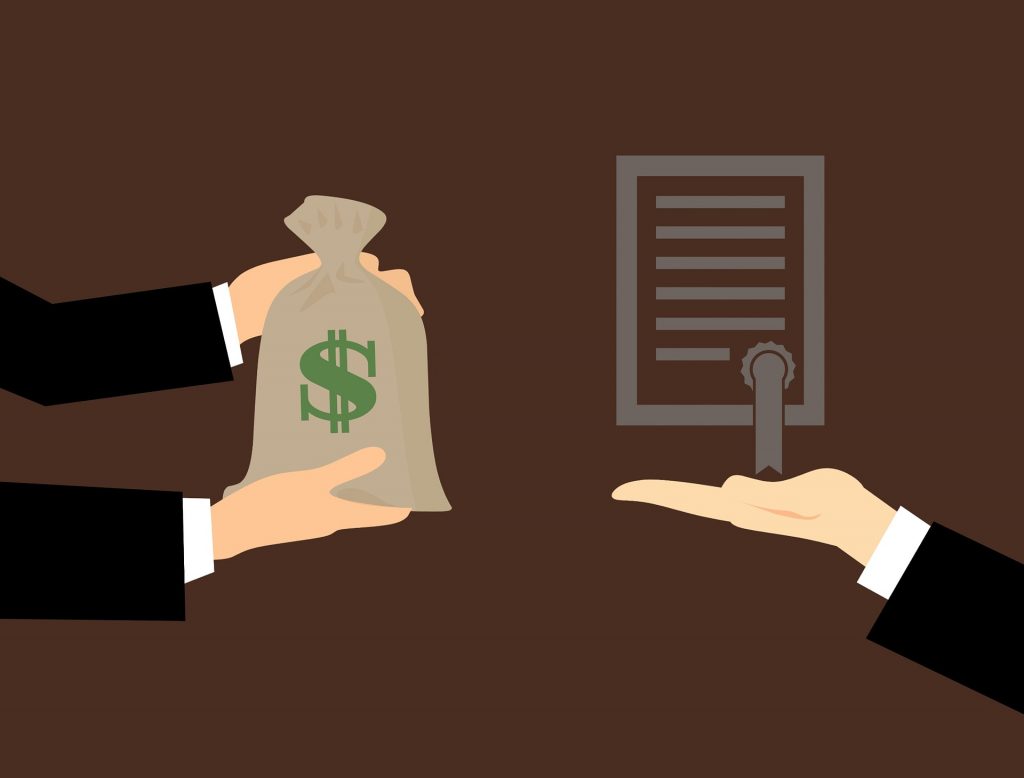TYPES OF DERIVATIVES
Once you have decided what market you want to trade, you will need to decide upon the vehicle through which you want to do this. When you need a vehicle to enter the markets, there are a wide variety of products. Mostly different types of derivatives, from which you can choose. Derivatives are so-called because their price is ‘derived’ from that of the underlying market. When you trade derivatives you do not actually end up owning anything (as you would if you bought shares in a company). You enter into a contract to pay or receive money based on price movements in the market from which the contract is derived.

Futures Contracts
Futures contracts are one of the most widely traded types of derivatives. They have now become one of the most popular vehicles used for market speculation. They are transparently priced (unlike options), exchange-traded and very liquid (the turnover in FTSE futures, for example, is far greater than that of all the constituent stocks in that index), and increasingly affordable (with the introduction of ‘e-mini’ electronic contracts such as the YM and the ES).
The easiest way to explain how futures contracts work is to explain how they came about:
It used to be that a producer, such as a grain farmer, would roll up at a market place such as the Chicago Board of Trade with a big cart of grain. He would aim to sell. Those who intended to buy grain that day would stand and watch the grain merchants setting up. Watch the numbers arriving to buy grain, and would instinctively begin to weigh up the balance of supply and demand. If they could see that there were many merchants with plentiful stock, but fewer buyers, then they would go into their negotiations. The aim was running the prices down. If a merchant wouldn’t lower his price, then there were plenty more that the buyer could go to who were desperate to sell their stock.
This was deemed somewhat unfair on the merchants, and the solution was an early form of a futures contract. Rather than turning up with his latest grain harvest, a merchant would arrive at the marketplace with a contract. Agreeing he would deliver a specified amount of grain on a specified date, at a particular price. The buyer in this contract would agree to take delivery of the commodity at the agreed price and date. The agreed price would typically be the trading price of the commodity (i.e. the underlying cash market) on the settlement date.

Difference between Futures and Options
The main difference that you will note between Futures and Options contracts is that the buyer of the former is obligated to take delivery at the settlement date, whereas the buyer of the latter has the option to take delivery, and may choose not to exercise this option. A futures contract, however, will state whether there is to be a physical or cash settlement. In practice, this means that you don’t want to be holding on to a futures contract around the time of its expiry. Unless you happen to want several hundred barrels of crude oil delivering to your doorstep. Or thirty ‘lean hogs’ running around your driveway (an amusing image though that may seem). As well as converging with the underlying market on the settlement date, futures are subjected to periodic ‘true-ups’ in which their price is adjusted.
These types of derivatives should make all of the following specifications:
- The underlying asset or financial instrument.
- Whether cash or physical settlement.
- The amount and units of the underlying asset per contract.
- The currency in which the futures contract is quoted.
- The grade of the deliverable.
- The delivery month.
- The last trading date.
- Other details such as the tick size.

Futures contracts are now available on pretty much any underlying market or security that you care to imagine. That includes everything from single stocks to commodities and currencies. Some have become so well established that it is now possible to write options on the price of the future. That would be a type of a derivative of a derivative, right? As trading moved off the floors there arrived the ‘e-,Mini’ electronically traded contracts. Such as the YM (Dow30) and the ES (S&P500), which are ideally suited to small independent traders because they allow smaller position sizes to be established. The mini-sized Dow, for instance, is worth just $5 per point, compared to $50 for the ‘Big Dow’ future.
Options
Options are one of the most complicated speculative vehicles. You will need to progress your understanding far beyond the short explanation we give here before you consider trading with them. None of the strategies we give in this blog is intended for options trading. Although some of them could be adapted for this.
An option is one of many types of derivatives. It is a contract that gives the holder the right to buy or to sell a security, provided that it reaches a specific price before a specific date. The specified price at which the underlying security may be traded is known as the ‘strike price’. The date until which the contract remains valid is the ‘expiration date’ (after this date options become totally worthless). To make a profit from an option, you will need it to move in your favour by more than the amount of the premium.
An option to sell is known as a ‘Put’, and an option to buy is a ‘Call’. Unfortunately, it gets more complicated than this, as there are both long and short variations of puts and calls. Each with their own subtly different outcomes. If you thought that an instrument’s price was set to increase, for example, you could purchase a long call option or you could sell a short put.
The price of the contract is determined by the price of the underlying market from which it is derived. Plus a ‘premium’ based on the amount of time until the contract expires. The premium is collected by the writer of the option. Most options used as tradable instruments are those that trade on exchanges, through which the price can be tracked.

Exchange-Traded Funds
Exchange-traded funds are other types of derivatives often used for longer-term speculation in a pool or ‘basket’ of securities. In some respects, they are rather like a ready-made portfolio and may contain stocks, commodities, currencies, or bonds. In many respects, ETFs are not dissimilar to investment trusts or mutual funds.
Apart from diversification of an investment across a range of different securities, other advantages to ETFs include lower tax efficiency, lower costs compared to similar products, and transparent, continuous pricing (many similar products can only be bought or sold at the daily close).
ETFs are typically used by the speculating public looking for managed investment solutions. They are not really of any use for active trading.
Contracts for Difference (CFDs)
CFDs were a UK development of the 1990s that has since spread to other parts of the world. Except for the USA, where these types of derivatives are classed as an ‘over the counter’ and are not permitted. A CFD is a contract between two parties. A buyer and a seller stipulating that the one will pay to the other the difference between the current value of an asset, and its value at the time the contract is settled. If the difference is positive, then the seller pays the buyer; if it is negative the buyer pays the seller. CFDs have no expiry date, and the settlement is therefore at the discretion of the buyer. This fact aside, there are no standard contract terms. Some providers charge fixed execution fees or commissions, and others charge the bid-ask spread.
Because CFDs do not involve actual ownership of the underlying equity, they have the advantage that they are not subject to UK Stamp Duty and can be traded on margin.
Though futures contracts are exchange traded, CFDs carry the advantages of smaller contract sizes, no expiry dates, and the fact that they mirror exactly the price movements of the underlying instrument.
Financial Spread-betting
The concept of financial spread betting allows you to spread bet on the movement of a financial instrument. This type of derivatives was developed in the UK following the success of CFDs as an over-the-counter product. Your earnings from spread-betting are completely tax-free.

The ‘spread’ in question here is the difference between the bid and the ask price that we discussed earlier. However, the betting company will further increase this spread, as (assuming you place a winning trade), this is how they make their money (rather than charging a commission).
In the UK, financial spread-betting is almost certainly the best way forward for new traders. Opening a spread-betting account will give you instant, one-shop access to a wide variety of markets in which to develop your trading skills. In addition to the tax advantages, it provides the possibility of trading much smaller account size. As well as, risking much smaller sums of money. If you hold a single Dow Futures contract and it moves just twenty points against you, this will represent a loss of £62. If you were spread-betting at the minimum size, an identical adverse move might cost you just £10. Most spread-betting companies will provide you with free access to a basic browser-based charting package.
A few words of caution
- Associated products with names like ‘binary bets’ and ‘bungee bets’ should most definitely be avoided.
- The charts these companies provide often have glitches. Make sure that you are aware of these so they do not affect your trading.
- When you determine your entries and exits you will need to factor in the spread. If you have a two-point spread, the price will need to move twelve points in order to hit a ten-point target. As well as, just eight points to take out a ten-point stop-loss.
- If you’re trading a large position size you will pay more in spread than you would pay a broker in commission. Spread-betting is no longer an economical option.
Covered Warrants
Covered (or ‘naked’) warrants are perhaps best described as ‘longer-term options’. Like a traded option, these types of derivatives entitles the holder to buy or sell the underlying asset at a specified price at or before the expiry date. This is usually measured in years rather than months. Once again, for this privilege, you must pay a ‘premium’, and your liability is limited to this, although covered warrants are considered a leveraged product.
Covered warrants tend to be issued by financial institutions. The issuer will normally hedge their exposure with a position in the underlying market.